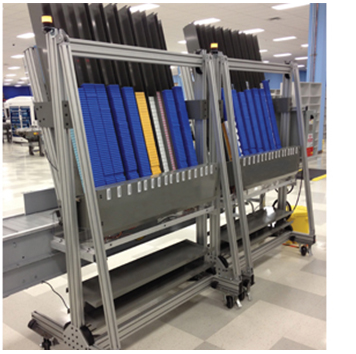Holste Says: |
 |
| ...as a result of the rapid growth of e-fulfillment many distributors are looking for automated piece picking and case picking technologies that can be integrated into their existing operations. |
|
What Do You Say?
|
|
|
|
Previous Columns by
Cliff Holste |
|
|
Last week we covered ProMat 2015; reporting on several interesting order fulfillment technologies (see our video recaps Day 1 & Day 2). We noted that as a result of the rapid growth of e-fulfillment many distributors are looking for automated piece picking and case picking technologies that can be integrated into their existing operations.
Driven by global web-based marketing, distributors are experiencing the greatest expansion of consumer products in history. Just think about all the new stuff that is available today compared to just a few years ago. Unfortunately, much of the new stuff is fashion and/or trend driven and consequently has a relatively short life cycle. This is driving up inventory levels by making it more difficult for business managers to know when to discontinue stocking some of these items. As a result, many distributors are forced to maintain a dedicated picking position for even the slowest of the slow movers, taking up valuable storage and pick-face space that is being poorly utilized.
For example, we found that a large distributor of fragrances had over 900 slow moving SKUs which amounted to only about 2 percent of total volume but contributed to substantial bottlenecks in order processing. So they deployed two vertical lift modules (VLM) equipped with voice directed picking technology. This relatively inexpensive solution resulted in a more efficient picking and storage operation.
It should be noted that this type of Product-to-Person technology is not new. Vertical and horizontal carousels are used extensively in parts distribution operations – an environment often characterized by huge number of mostly slow moving SKUs.
 We also noticed that the Mobile-matic portable A-frame dispenser, provided by SI Systems (picture on left), has been updated to integrate with any WMS and conveyor system. We also noticed that the Mobile-matic portable A-frame dispenser, provided by SI Systems (picture on left), has been updated to integrate with any WMS and conveyor system.
To operate, product is stacked into the channels, rolled to its destination and plugged in. When connected to a facility’s host network, the unit automatically ejects items into the correct destination containers or directly onto the takeaway belt. It is ideal for order fulfillment of seasonal or promotional items, relieving pressure on manual picking operations.
The adjustable mobile base unit includes 16 channels and can be scaled-up to supports addition units as needed.
Some distributors have found significant improvement through the adoption of still more automated Product-to-Person technologies.
For example - a mini-load AS/RS designed to handle individual loads (cases, totes, trays) is a popular product-to-picker solution for managing slow-moving SKUs. In this scenario, when a slow-moving SKU is required, the crane-like multi-shuttle system retrieves that item from its high bay storage location and creates a temporary pick face for it. When order fulfillment is complete the AS/RS places that SKU back into high density storage. This eliminates the need for a pick face in the DC for each slow mover, freeing up valuable space. At ProMat 2015, we noted that systems of this type, equipped with robotic picking are being provided by several of the large system integrators.
|